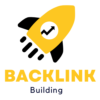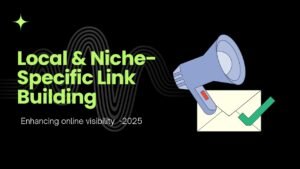If you want more people to find your website on Google, you need good links pointing to it. One of the easiest and most effective ways to get those links is by using resource page link building. If you are new to this term, do not worry. In this blog, we will walk you through everything you need to know about resource page link building in 2025. You will learn how to find these pages, how to reach out, and how to get backlinks that actually help your SEO. And do not worry—we will keep it all simple and easy to follow.
Let us get started!
What Is Resource Page Link Building
A resource page is a page on a website that lists helpful tools, guides, articles, or services. It is made for one reason — to help visitors find useful stuff on a topic.
For example:
- A health blog may list mental health resources
- A college may have a list of online learning platforms
- A digital agency may list top SEO tools or content guides
Now, resource page link building means getting your content added to one of these lists. Your blog post, tool, or free guide becomes one of the recommended resources.
That is it. No fancy tricks. Just simple value exchange.
You offer:
- A helpful piece of content
- A well-designed tool
- A valuable checklist or guide
And in return, the owner of the page adds your link to their list.
It is clean, simple, and works beautifully when done right.
Why Resource Pages Are Still Valuable in 2025
Some people think resource pages are old-school. But the truth is — they still work amazingly well, and here is why:
- Built for Linking: These pages are made to link out to others. That means your request to be included does not feel pushy. It is expected.
- Trusted by Google: Resource pages are often hosted on sites with high trust. Getting listed there sends a good signal to search engines.
- Niche-Relevant: Most resource pages are focused. That means you get a link from a page closely related to your topic, which is a big SEO win.
- Evergreen Value: These pages often stay live for years. Once you get your link there, it keeps sending traffic and authority over time.
- Low Outreach Fatigue: Unlike guest posts or influencer mentions, fewer people are asking for resource page links. So your pitch has a better chance of being read.
If you do not want to spend weeks begging for links or writing guest posts, this is a simple, low-effort, high-return strategy.
Resource Page Link Building Strategies: Step by Step
Here’s a step-by-step breakdown of resource page link building strategies, that focuses on earning links from pages specifically curated to link out to valuable content:
Step 1. Find High-Quality and Relevant Resource Pages
Your first step is finding the right pages. This makes all the difference.
Here are some search tricks you can use on Google:
- keyword + “resources”
- keyword + “useful links”
- keyword + “helpful websites”
- keyword + “recommended tools”
- site:.edu keyword + resources (for educational sites)
For example, if your content is about email marketing, search for:
- email marketing resources
- email marketing “useful tools”
- site:.edu email marketing resources
Make sure:
- The page is active and updated.
- It links to external sites (some do not).
- The page is relevant to your content.
You can also use SEO tools like Ahrefs or Semrush to check if the page has good authority.
Step 2. Create a Resource Worth Linking To
This step is super important.
You cannot ask someone to link to a random blog post and expect them to say yes. Your page has to offer real value. It should be something their audience will thank them for sharing.
Here are some examples of what works well:
- Step-by-step guides (e.g., “How to Start a Podcast in 2025”)
- Free tools (e.g., backlink checker, keyword planner)
- Ultimate lists (e.g., “Top 50 SEO Tools for Beginners”)
- Visual explainers (e.g., infographics or charts)
Also, make sure your content is:
- Well-written and easy to understand
- Updated and fresh
- Neatly designed and mobile-friendly
Bonus tip: Add a small section that explains why your page is helpful. This can be reused in your outreach emails.
Step 3. Send Personalized and Friendly Outreach Emails
Now comes the outreach part. This is where many people mess up.
The goal here is to start a real conversation, not just throw in a link request.
Here is a simple email structure you can follow:
Subject: Loved your resource list on [Topic]
Body:
Hi [Name],
I was going through your page on [Page Title], and I must say — that is a great list of resources! I especially liked [mention something specific from the page].
I recently created a resource on [Your Topic] that I think your readers might find useful. It covers [what it covers in 1 line] and includes [bonus value if any].
Here is the link if you’d like to take a look: [Your URL]
If you think it is a good fit, feel free to include it in your list. Either way, thanks for putting together such a helpful page!
Cheers,
[Your Name]
Quick tips:
- Keep it short.
- Personalize it.
- Do not sound desperate or robotic.
- Follow up once (after 5-7 days) if you get no reply.
Step 4. Use Tools to Scale the Process
Doing everything manually is okay when starting out, but if you want to scale, use tools smartly.
Here are some tools that can help:
- Hunter.io or Snov.io – to find email addresses
- BuzzStream or Pitchbox – to manage outreach
- Ahrefs / Semrush / Moz – to check authority and backlinks
- Notion / Google Sheets – to track your progress
Set up a small workflow:
- List potential resource pages
- Note the contact info
- Track who you reached out to
- Note replies and links earned
Doing this consistently will make a big difference over time.
Step 5. Don’t Forget .EDU and .GOV Resource Pages
One of the best-kept secrets of resource page link building is targeting .edu and .gov pages.
Why? Because:
- They usually have high authority
- Their links pass a lot of SEO value
- They are very selective — so getting a link is a big deal
How to find them?
Search like this:
- site:.edu + your keyword + “resources”
- site:.gov + your keyword + “recommended links”
Example:
- site:.edu digital marketing resources
- site:.gov small business tools
Keep your pitch extra respectful and formal. These websites often care about educational value, so highlight how your content helps students, professionals, or the public.
Step 6. Track, Measure, and Improve
Lastly, do not forget to measure how your efforts are working.
You can track:
- How many emails you sent
- How many replies you got
- How many links you earned
- Which content pieces are getting the most links
Tools like Google Analytics and Ahrefs can help track referral traffic and new backlinks.
Also, take time every month to:
- Update your content
- Add fresh resources
- Improve your pitch based on what worked
Remember: resource page link building is a long-term game. But if you do it right, the backlinks you earn can bring traffic and rankings for years.
Step 7. Build Relationships, Not Just Links
If you want long-term success in resource page link building, think beyond just getting a backlink—think relationship-building.
Here’s how to turn one-time link placements into ongoing opportunities:
- Engage on Social Media: Follow and interact with the people behind the sites that are linked to you. Share their content, leave thoughtful comments, and be part of their community.
- Offer to Collaborate: After you’ve earned a link, suggest co-creating content, contributing a guest post, or even doing a webinar together. This shows you’re invested beyond a single task.
- Keep Them Updated: When you update your content, launch a new tool, or publish something else valuable, reach back out and share it with them. You’re not spamming—they already liked your first piece.
- Give Back: If someone links to your resource, see if there’s a way to return the favor. Maybe you can link to their site or recommend their tool in your own content.
Over time, this approach creates a network of allies who are more likely to support your content again and again.
Tips to Make It Work Better
Here are some extra tips to help you get more links:
- Go for Niche Topics: Broad topics are harder. If you focus on a narrow topic, you will find more specific resource pages that fit your content perfectly.
- Make Your Content Easy to Understand: Avoid big words or complex language. Keep your page clean, simple, and helpful.
- Improve Your Content Over Time: If people do not link to it right away, that is okay. Improve it. Make it better. Then try again later.
- Build Relationships: Some people you email might become contacts for the future. Be kind. You never know where it might lead.
- Do Not Give Up Too Soon: You might need to send 50 emails to get 5 links. That is normal. Just keep going. Every good link helps.
Common Mistakes To Avoid
Even though this strategy is simple, there are a few common mistakes that people make. Avoiding them can save you hours.
Mistake 1: Pushing Irrelevant Content
Do not suggest your blog about cat grooming to a digital marketing resource page. The content must fit like a glove.
Mistake 2: Using Generic Templates
Copy-paste emails get deleted fast. Personalize your pitch. Mention something specific from the page.
Mistake 3: Ignoring Broken Pages
Always check if the resource page is still active. Some pages get abandoned. No point in chasing dead links.
Mistake 4: Asking for DoFollow Links
Never ask for a “dofollow” link directly. It looks spammy. If the site links to you, great. But let them choose the format.
Mistake 5: Offering Nothing in Return
If your content is not unique, useful, or well-presented, people will not add it. Make sure you are offering real value.
Conclusion
Resource page link building is not a magic trick. It is about being helpful, friendly, and honest.
If you create something people need, and you reach out in a kind way, you will start getting links. And every good link helps your website grow.
You do not need to be an expert. You just need to care about what you are sharing.
Start small. Keep going. And remember, it is not about how many people you ask — it is about how helpful your content really is.


